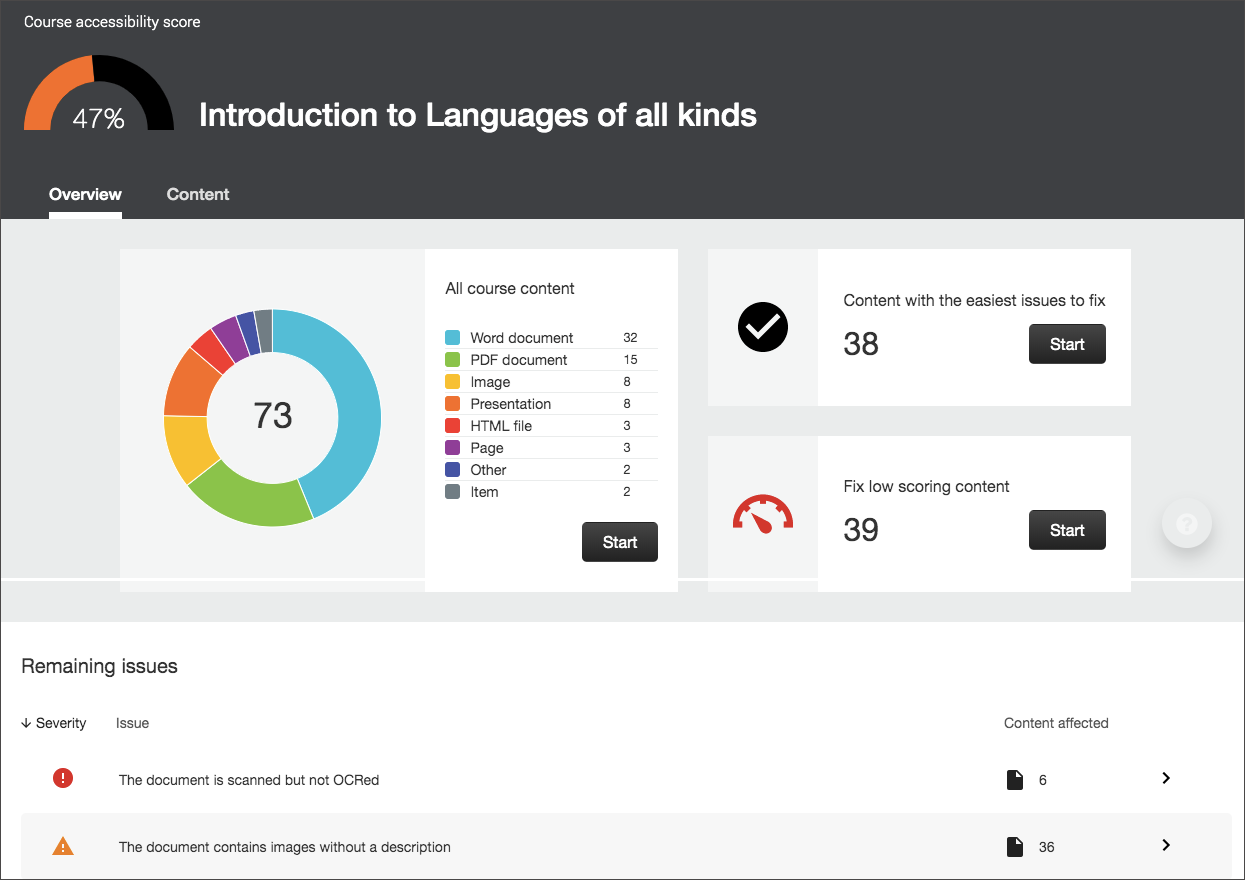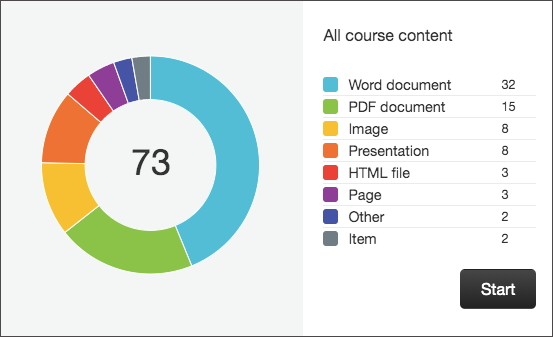Currently, Ally checks files in these formats:
- PDF files
- Microsoft® Word files
- Microsoft® PowerPoint® files
- OpenOffice/LibreOffice files
- Uploaded HTML files
- Image files (JPG, JPEG, GIF, PNG, BMP, TIFF)
- WYSIWYG/VTBE content
Use the accessibility report to help you decide what to fix first. For example, content with the most severe issues first or start with the content that's easiest to fix. Choose between Content with the easiest issues to fix and Fix low-scoring content. See how many pieces of content you'll be fixing. Select Start.

Issues are listed in order of priority from severe to minor. Those at the top of the list should be addressed first. Ally looks at the number of students impacted, how often the issue occurs, and the accessibility score to determine the priority.
-
 Severe. These issues are the greatest risk to accessibility and require the most attention.
Severe. These issues are the greatest risk to accessibility and require the most attention. -
 Major. These issues impact accessibility, and while not severe, require attention.
Major. These issues impact accessibility, and while not severe, require attention. -
 Minor. These issues should be considered for a better accessibility score.
Minor. These issues should be considered for a better accessibility score.
Select an issue to see all the pieces of content that have that issue. Select a piece of content to open the Instructor Feedback panel to fix the issue.
The Course Accessibility Report is located in the Left Navigation Bar in Canvas.

Source: Course Accessibility Report
https://help.blackboard.com/Ally/Ally_for_LMS/Instructor/Course_Accessibility_Report


 Accessibility removes barriers enabling learners to engage and participate in activities seamlessly and effortlessly. Including accessible resources or content within your course, reduces and helps to overcome these barriers that might occur for people with disabilities during their digital or physical interactions.
Accessibility removes barriers enabling learners to engage and participate in activities seamlessly and effortlessly. Including accessible resources or content within your course, reduces and helps to overcome these barriers that might occur for people with disabilities during their digital or physical interactions.





